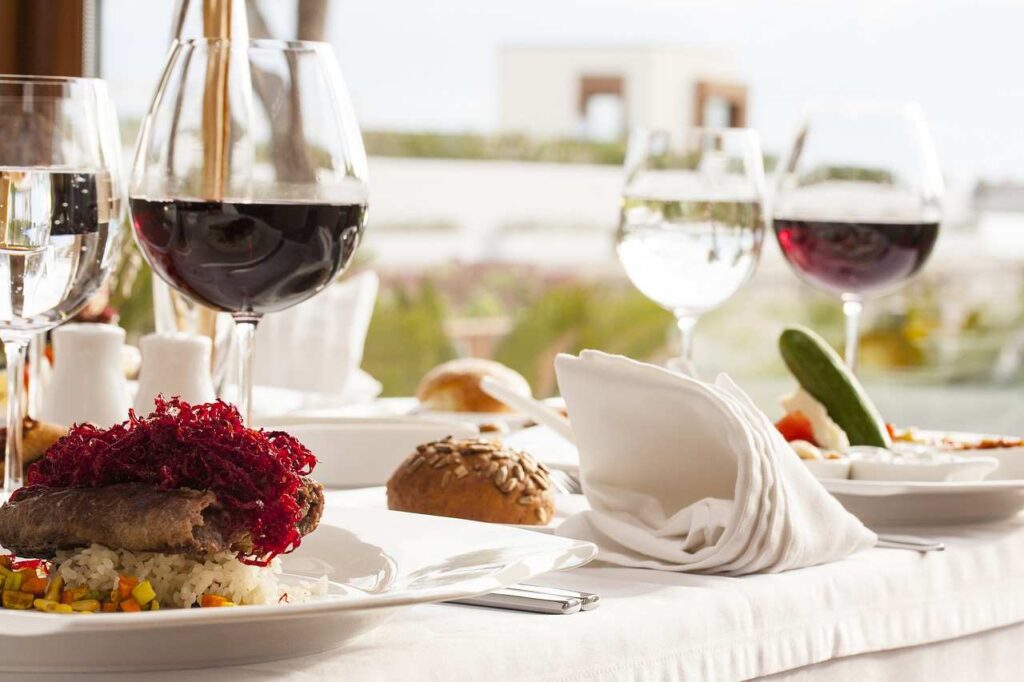What if you could create additional value for your product or service in the mind of your customer that would cost you nothing — would you be interested? Well you can, and it is easy when you understand how to use Consumption Vocabulary.
A good description can convey your knowledge, build trust with the consumer, and set their expectations so that they will appreciate and value your offering more.
Create Value
Have you ever heard a sommelier describe a bottle of wine?
“Fissore’s wines have exceptional balance and purity of fruit. The Bricco Pernice Barolo comes from a specific vineyard plot within the lauded, long-aging Ravera cru. It’s elegant, silky, powerful, and refined, with bright red fruit, soft tannins, and a thin line of acidity that will preserve this cuvée for decades to come. It’s the kind of bottle that embodies traditional Nebbiolo, yet defies the Barolo region’s tannic, angular, unapproachable stereotypes.”
The above is an actual description of a bottle of wine. I don’t know about you, but I really don’t have any idea what half the words in the descriptions mean and neither do a lot of people. However, the take away is that the wine must be something very special. This is because when it comes to creating value, marketers can use luxurious and flowery terms, lengthy descriptions, and even made-up words because people believe in the magic of language.
Economist called the use of specific terms to describe an experience as “Consumption Vocabulary”.
In another example of Consumption Vocabulary consider Starbucks. Rather than use small medium and large to describe their coffee sizes, they use Short, Tall, Grande, Venti, and Trenta. Coffees are not described as regular or decaffeinated but instead are labeled as Latte, Cappuccino, Macchiato, Americano, Cordusio, and the list goes on. The use of luxurious and uncommon words trigger greater value in the mind of the consumer. It is this use of Consumption Vocabulary that allows Starbucks to charge more for their products than McDonald even though in blind taste tests consumers rate McDonald’s coffee as better tasting.
Consumption Vocabulary is a trick often used in fine restaurants to justify a higher perceived value on their product. Let’s consider a Consumption Vocabulary with respect to a cheeseburger with lettuce and tomatoes. A tavern or pub may list the burger on their menu simply a cheeseburger. However, a description used to describe a cheeseburger in a fine restaurant might read something like the following
“Artisanal goat fromage graces our hand-crafted grass-feed bovine composite, served on our homemade bruschetta bun, topped with heirloom vine-ripened tomatoes, curated greens, and our special reserve spice blend parsed for variances by expertologists.”
The tavern burger’s description might justify a $5 price, while the latter description might command $20 or more.
Create Trust
In addition to customer perception and the attribution of higher value to a product or service, the language used in a description can convey a person’s knowledge and build trust between the brand and the consumer.
As a bourbon drinker, I did a bourbon tour one year on vacation and tried to visit every bourbon distillery in Kentucky. In the tasting room, the bourbon host’s description used specific terms like “bouquet” or “legs” to describe their whiskeys. The use of exclusive vocabulary makes a person appear to be very knowledgeable about their product. This perceived knowledge breeds trust with the consumer.
While it’s often good advice to translate technical terms for a user, the use of technical terms also has a component of adding value because when people use technical terms that the consumer does not necessarily understand, it’s clear that the person using the words has additional knowledge and education for which they ascribe value to.
Create Expectation
Consumption Vocabulary is not all about jargon to convey knowledge, however. With the use of specific sensory descriptions, the marketer can change the value of an experience.
Consider the old McDonalds ad that listed all the ingredients in their Big Mac. “Two all-beef patties, special sauce, lettuce, cheese, pickles, onions, on a sesame-seed bun.” As a consumer listened to the list of ingredients in the marketing jingle, they stopped to consider the experience of consuming the Big Mac. Moreover, it made the consumer aware that there was a lot of steps and a lot of components that went into a Big Mac hamburger. The use of Consumption Vocabulary in this case, created greater perceived value in the Big Mac so they could charge more for it.
In his book Dollars and Sense, How We Misthink Money and How to Spend Smarter, author Dan Ariely says “Consumption Vocabulary makes people think, focus, and pay attention to the message. thereby causing them to slow down and appreciate the experience in ways different than they would experience it without it.” Therefore, the use of Consumption Vocabulary can help the marketer gain the attention of the consumer and set their expectations so that they appreciate the product or service a lot more so you can charge more of the experience.
The language used to describe a product or service can alter the customer’s perceptions and its value. A good description can convey your knowledge, build trust with the consumer, gain their attention, and set their expectations so that they appreciate and value it more.
In the hands of a skilled copywriter, Consumption Vocabulary can allow consumers to value your product more so that you can charge more for the experience.
How can you include Consumption Vocabulary in your marketing message to drive higher profits?












